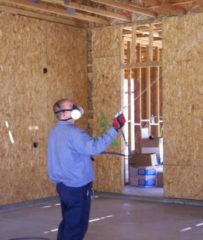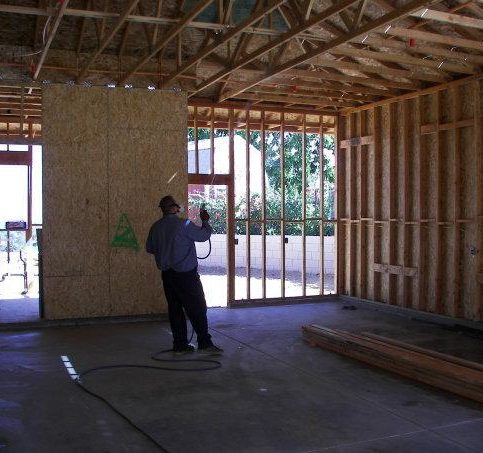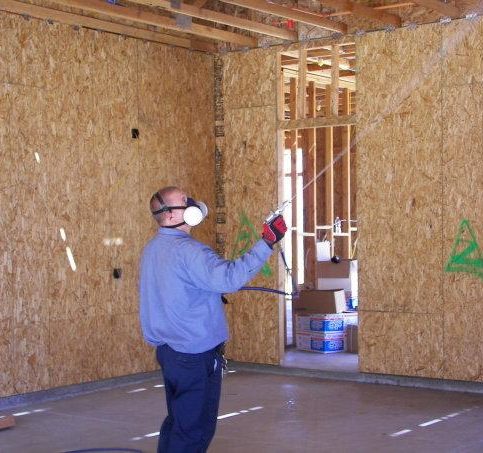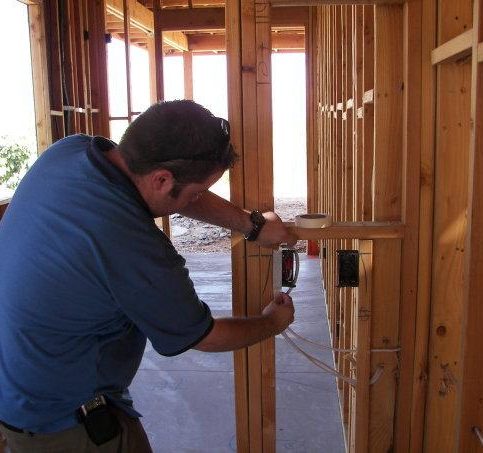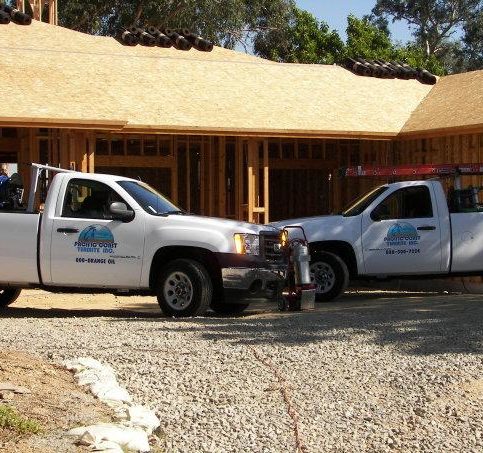Q: How do I know if I have a termite problem?
A: You may see swarms of flying insects both inside and outside your house, usually in the spring. After swarming, the termites shed their paper-like wings and you may find them on windowsills, counters or floors. Tiny holes in wood, small piles of wood shavings, crumbling drywall, and sagging doors are all indicative of a termite infestation. Also, termites often make tubes of mud and other debris across concrete surfaces. Unfortunately, these signs indicate structural damage to your home or business has already occurred. By the time you see them, the damage has already started.
Q: How do I prevent termites?
A: Schedule regular home inspections by pest control specialists and pre-treat the wood in your building. Also, keep the house and foundation dry and caulk around windows and doors—termites love moist environments. Keep your gutters clean and ensure they drain at least three feet from the building. Move any stacked firewood away from the side of the building.
Q: What’s orange oil?
A: Orange oil is a Green product derived from orange rinds that’s used in a variety of products, from pet shampoos to household cleaners. The brand we use for termite control, XT-2000®, is injected directly into termite galleries and kills termites and their eggs on contact. Should a termite avoid physical contact with orange oil, it can also die if it eats any wood that’s recently been treated with the product. XT-2000 and its active ingredient, d-limonene, is devastating to termites because of its exceptionally high citric acid content, which is of minimal consequence to humans. Orange oil biodegrades in about four days, but during that residual period, termites that eat treated wood will also be eradicated.
Q: Do I have to leave my home during the treatment?
A: No. All the products we apply are safe for humans. You can stay and watch our technicians at work.
Q: What’s Bora-Care®?
A: Bora-Care® is a patented liquid pre-treatment used to protect structural wood from termites and other wood destroying organisms. The active ingredient is a borate compound, safe for humans and pets but toxic to both insects and fungus species. We apply Bora-Care directly to the wood in a building, not the soil around it. With soil treatments, even under the best circumstances, termites can still enter through a break in the soil barrier and cause major damage to the wood in the structure. But if termites can’t eat the wood, the probability of structural damage is minimized. Once the borate compound diffuses into the wood, it remains indefinitely. Only high levels of water saturated in the wood will force out the active ingredient, so we generally recommended you seal exposed exterior structural wood after Bora-Care application to prevent excessive moisture.
Q: When is the best time to pre-treat wood with Bora-Care?
A: The best time is during construction, before the house is boarded up. But we can apply it to existing buildings, although there may be areas we can’t access.
Q: Is Bora-Care effective?
A: Research from a 12-year study by the USDA Forest Service and Mississippi State University’s Forest Products Laboratory shows wood treated with Bora-Care stops termite attacks and prevents subterranean termites from tubing over-treated wood. In addition, tests conducted at Louisiana State University have shown that when Bora-Care is applied to concrete surfaces, it prevents termite tubing. Treated wood is also protected against carpenter ants, old house borers, powderpost beetles, and fungi.
Q: Is Bora-Care safe?
A: Yes. Not only is it safe for humans, but unlike many soil termiticides, Bora-Care won’t corrode with PVC plumbing, metal fasteners, fittings, or nails. Also, we apply it directly and only to the wood or concrete. It’s not applied to the general environment and doesn’t leach into water supplies.
Read moreRead Less




